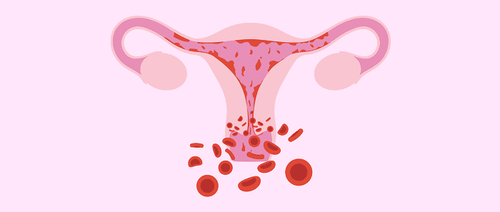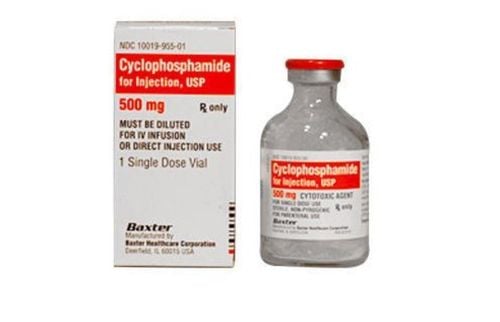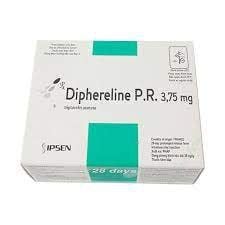This is an automatically translated article.
Ovarian varices is a chronic and slowly progressive disease. The disease often has no obvious signs, so it is easy to confuse. Therefore, many patients with the disease are not treated in time, leading to dangerous complications that directly affect fertility, even infertility.
1. What is ovarian varicose veins?
Varicose veins of the ovary are understood as the veins here are dilated than normal, causing chronic venous congestion syndrome. The disease is usually diagnosed when a woman has pelvic pain that is not caused by the menstrual cycle, and the pain lasts for 6 months or more. According to statistics, this syndrome occurs in about 39.1% of women, of all ages with different degrees.According to some statistical studies, this syndrome mainly occurs in women under 45 years old, but the rate of women who have never been pregnant has this condition is very low. About 15% of women who visit gynecological clinics are diagnosed with venous congestion syndrome. However, not every case of pelvic pain is also caused by ovarian varices or ovarian failure, only about 30% of cases of pain are due to this cause.
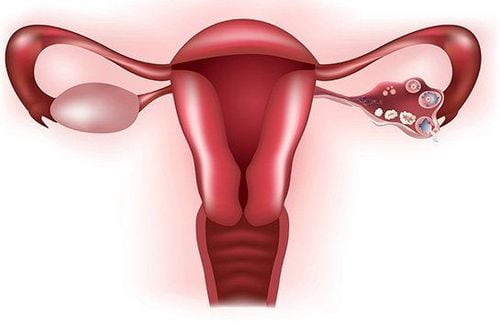
Suy buồng trứng có thể là một trong những yếu tố gây đau tiểu khung
2. Signs of ovarian varicose veins
The main manifestation of varicose veins of the ovary is persistent lower abdominal pain, with or without back pain. The nature of the pain is often chronic, long-lasting, dull. The pain tends to increase after sex, during menstruation, or during pregnancy. In addition, after a tiring working day, especially for women who have to stand a lot, the pain also increases at the end of the day.
In addition to abdominal pain, women with varicose veins of the ovaries also have other symptoms, including:
Diarrhea, frequent urination due to bladder irritation. Irregular menstrual cycle, menorrhagia, missed period. Vaginal discharge may be abnormal. In addition to ovarian varices, varicose veins of the vulva, buttocks, or thighs may also be present.

Chậm kinh là triệu chứng phổ biến của bệnh
3. How is the disease diagnosed?
When detecting the above symptoms, the patient should quickly visit a hospital with a specialist in obstetrics and gynecology. The doctor can prescribe many different tests to help diagnose the disease more accurately. Specifically as follows:
Normal subframe ultrasound: This is the simplest subclinical diagnostic method among obstetric and gynecological exploration methods. Ultrasound can be performed at most hospitals and clinics. Due to its simple nature, the ability to diagnose ovarian varices on conventional ultrasound is also quite low, accurate results depend a lot on the experience of the sonographer, sometimes in combination with Doppler ultrasound. blood vessels for a more accurate diagnosis. Transvaginal Transvaginal Ultrasound: This method uses an ultrasound transducer inserted directly into the patient's vagina. Thereby, direct ultrasound images are obtained to help assess the status of the uterus, appendages and vascular system in the pelvic region, including the ovarian vein system. This is a highly effective diagnostic imaging method. MRI scan of the pelvis: Besides ultrasound, MRI with or without contrast injection is the non-invasive method to help diagnose the best today with dilated genital veins and congestive syndromes. Sub-frame. Besides, subframe MRI also helps to diagnose and exclude some other diseases such as endometriosis, uterine fibroids...
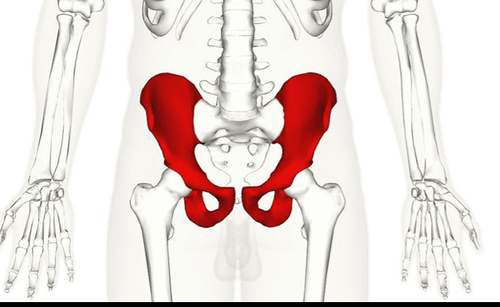
Chụp MRI cộng hưởng từ tiểu khung giúp chẩn đoán các bệnh lý suy giãn hệ tĩnh mạch sinh dục
Pelvic angiography: This is the most specific subclinical diagnostic method. However, this is an invasive method, the procedure is to insert a catheter into the genitourinary system, inject contrast, and then take an angiogram, which is then digitally processed to exclude unrelated images. organ (also called background deletion angiography DSA). This method requires the performing doctor to have modern vascular intervention techniques and is only indicated if the patient decides to treat by vascular intervention.
4. Treatment of ovarian varicose veins
With the above symptoms and imaging methods, doctors can accurately diagnose patients with chronic venous congestion syndrome. At that time, the doctor will choose different treatment methods, including:
Medical treatment: Using drugs to limit the dilation of ovarian veins, this is the first and basic method before when other methods are applied. Indicated medications include Medroxyprogesterone acetate (Provera) and Goserelin (Zoladex). Hysterectomy, genital vein ligation: This is a surgical method widely applied in the past, but only about 30% of patients can reduce symptoms of dull abdominal pain, while the recurrence rate is up to 20 % after 2 years. In addition to the above two methods, the patient can also be prescribed by the doctor for treatment by endovascular intervention. This is a highly effective, safe, uterine-preserving method of treatment that is being applied very popularly today.
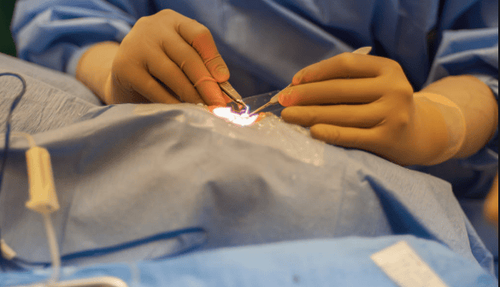
Can thiệp nội mạch cũng được áp dụng trong điều trị suy giãn tĩnh mạch buồng trứng
5. Endovascular intervention to treat ovarian varicose veins
Endovascular intervention is a minimally invasive treatment, performed by a highly qualified vascular surgeon. This technique uses a very small catheter system to pass from the femoral vein into the genital vein under X-ray guidance. Then use instruments (coils) to block the genital veins, thereby preventing reflux from the inferior vena cava, renal vein. The recovery time when using endovascular intervention is very fast, only about 1-2 days to be able to function normally.
Endovascular intervention (uterine vein, ovarian vein) has been shown to be a safe, minimally invasive, highly effective treatment for genital venous congestive syndrome.
Accordingly, the patient will be indicated for vascular intervention when there is chronic pelvic congestion syndrome, ineffective medical treatment. Although this method of treatment is very effective, in the following cases, endovascular intervention is not indicated:
Patients with severe coagulopathy, INR > 1.5 Platelet count <50 g /l, platelet count should be compensated before applying this technique. Acute, progressive pelvic pain. Genitourinary, urinary, pelvic or systemic infections have not been completely treated and need to be completely treated before vascular intervention is decided. Recorded history of allergy to contrast. Varicose veins of the ovary is a dangerous disease and often has no obvious signs of the disease, so it is easy to confuse. If detected late, the disease can leave complications and affect fertility. Therefore, when you have symptoms of illness, you should go to medical centers for examination and treatment.
Vinmec International General Hospital is the address for examination, treatment and prevention of diseases. When performing the examination process at Vinmec, customers will be welcomed and used modern facilities and machinery along with perfect medical services under the guidance and advice of doctors. Good doctors, well-trained both at home and abroad.
Customers can directly go to Vinmec Health system nationwide to visit or contact the hotline here for support.





